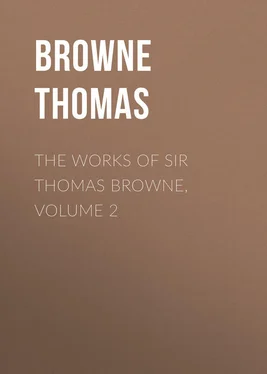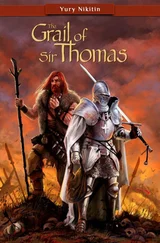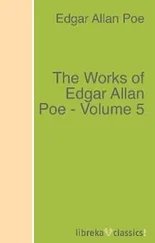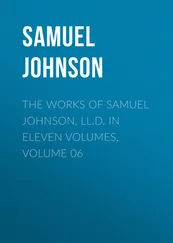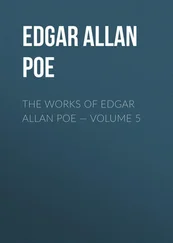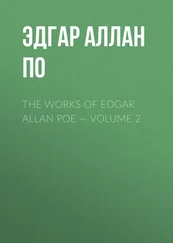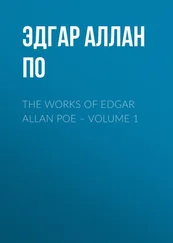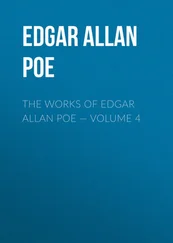Thomas Browne - The Works of Sir Thomas Browne, Volume 2
Здесь есть возможность читать онлайн «Thomas Browne - The Works of Sir Thomas Browne, Volume 2» — ознакомительный отрывок электронной книги совершенно бесплатно, а после прочтения отрывка купить полную версию. В некоторых случаях можно слушать аудио, скачать через торрент в формате fb2 и присутствует краткое содержание. ISBN: , Жанр: foreign_antique, foreign_prose, на английском языке. Описание произведения, (предисловие) а так же отзывы посетителей доступны на портале библиотеки ЛибКат.
- Название:The Works of Sir Thomas Browne, Volume 2
- Автор:
- Жанр:
- Год:неизвестен
- ISBN:http://www.gutenberg.org/ebooks/39961
- Рейтинг книги:5 / 5. Голосов: 1
-
Избранное:Добавить в избранное
- Отзывы:
-
Ваша оценка:
- 100
- 1
- 2
- 3
- 4
- 5
The Works of Sir Thomas Browne, Volume 2: краткое содержание, описание и аннотация
Предлагаем к чтению аннотацию, описание, краткое содержание или предисловие (зависит от того, что написал сам автор книги «The Works of Sir Thomas Browne, Volume 2»). Если вы не нашли необходимую информацию о книге — напишите в комментариях, мы постараемся отыскать её.
The Works of Sir Thomas Browne, Volume 2 — читать онлайн ознакомительный отрывок
Ниже представлен текст книги, разбитый по страницам. Система сохранения места последней прочитанной страницы, позволяет с удобством читать онлайн бесплатно книгу «The Works of Sir Thomas Browne, Volume 2», без необходимости каждый раз заново искать на чём Вы остановились. Поставьте закладку, и сможете в любой момент перейти на страницу, на которой закончили чтение.
Интервал:
Закладка:
The Works of Sir Thomas Browne, Volume 2
PREFATORY NOTE
The frontispiece to this volume is reproduced from a photograph kindly lent to me for the purpose by Mr. Charles Williams, F.R.C.S.E., of Norwich, whose note upon the measurements of Sir Thomas Browne’s skull appeared as Appendix ii. in the edition of Browne’s Hydriotaphia and Garden of Cyrus , published in the ‘Golden Treasury Series,’ by Messrs. Macmillan and Co., in 1896.
The identification of the author quoted in the margin of page 233 (Book v. Chapter x.). I owe to Mr. W. Aldis Wright.
C.S.May 1, 1904.
PSEUDODOXIA EPIDEMICA
THE THIRD BOOK — continued
CHAPTER XI
Of Griffins
That there are Griffins in Nature, that is a mixt and dubious Animal, in the fore-part resembling an Eagle, and behind, the shape of a Lion, with erected ears, four feet and a long tail, many affirm, and most, I perceive, deny not. The same is averred by Ælian , Solinus , Mela , and Herodotus , countenanced by the Name sometimes found in Scripture, and was an Hieroglyphick of the Egyptians.
Notwithstanding we find most diligent enquirers to be of a contrary assertion. For beside that Albertus and Pliny have disallowed it, the learned Aldrovandus hath in a large discourse rejected it; Mathias Michovius who writ of those Northern parts wherein men place these Griffins, hath positively concluded against it; and if examined by the Doctrine of Animals, the invention is monstrous, nor much inferiour unto the figment of Sphynx, Chimæra, and Harpies, for though there be some flying Animals of mixed and participating Natures, that is, between Bird and quadruped, yet are their wings and legs so set together, that they seem to make each other; there being a commixtion of both, rather then an adaptation or cement of prominent parts unto each other, as is observable in the Bat, whose wings and fore-legs are contrived in each other. For though some species there be of middle and participating Natures, that is, of Bird and Beast, as Bats and some few others, yet are their parts so conformed and set together, that we cannot define the beginning or end of either; there being a commixtion of both in the whole, rather then an adaptation or cement of the one unto the other.
Now for the word γρὺπς or Gryps , sometimes mentioned in Scripture Levit. 11. , and frequently in humane Authors, properly understood, it signifies some kind of Eagle or Vulture, from whence the Epithete Grypus for an hooked or Aquiline Nose. Thus when the Septuagint makes use of this word, Tremellius and our Translation hath rendred it the Ossifrage, which is one kind of Eagle. And although the Vulgar Translation, and that annexed unto the Septuagint, retain the word Gryps , which in ordinary and school construction is commonly rendred a Griffin, yet cannot the Latine assume any other sense then the Greek, from whence it is borrowed. And though the Latine Gryphes be altered somewhat by the addition of an h , or aspiration of the letter π, yet is not this unusual; so what the Greeks call τρόπαιον, the Latine will call Trophæum ; and that person which in the Gospel is named Κλέοπας, the Latines will render Cleophas . And therefore the quarrel of Origen was unjust, and his conception erroneous, when he conceived the food of Griffins forbidden by the law of Moses : that is, Poetical Animals, and things of no existence. And therefore when in the Hecatombs and mighty Oblations of the Gentiles, it is delivered they sacrificed Gryphes or Griffins; hereby we may understand some stronger sort of Eagles. And therefore also when its said in Virgil of an improper Match, or Mopsus marrying Nysa , Jungentur jam gryphes equis ; we need not hunt after other sense, then that strange unions shall be made, and different Natures be conjoined together.
As for the testimonies of ancient Writers, they are but derivative, and terminate all in one Aristeus a Poet of Proconesus ; who affirmed that near the Arimaspi , or one-eyed Nation, Griffins defended the Mines of Gold. But this, as Herodotus delivereth, he wrote by hear-say; and Michovius who hath expresly written of those parts, plainly affirmeth, there is neither Gold nor Griffins in that Country, nor any such Animal extant; for so doth he conclude, Ego vero contra veteres authores, Gryphes nec in illa septentrionis, nec in aliis orbis partibus inveniri affirmarim .
Lastly, Concerning the Hieroglyphical authority, although it nearest approach the truth, it doth not infer its existency. The conceit of the Griffin properly taken being but a symbolical phansie, in so intollerable a shape including allowable morality. So doth it well make out the properties of a Guardian , or any person entrusted; the ears implying attention, the wings celerity of execution, the Lion-like shape, courage and audacity, the hooked bill, reservance and tenacity. It is also an Emblem of valour and magnanimity, as being compounded of the Eagle and Lion, the noblest Animals in their kinds; and so is it appliable unto Princes, Presidents, Generals, and all heroick Commanders; and so is it also born in the Coat-arms of many noble Families of Europe .
But the original invention seems to be Hieroglyphical, derived from the Egyptians, and of an higher signification. By the mystical conjunction of Hawk and Lion, implying either the Genial or the sydereous Sun, the great celerity thereof, and the strength and vigour in its operations. And therefore under such Hieroglyphicks Osyris was described; and in ancient Coins we meet with Gryphins conjointly with Apollo’s , Tripodes and Chariot wheels; and the marble Gryphins at Saint Peters in Rome , as learned men conjecture, were first translated from the Temple of Apollo . Whether hereby were not also mystically implied the activity of the Sun in Leo, the power of God in the Sun, or the influence of the Cœlestial Osyris , by Moptha the Genius of Nilus, might also be considered. And then the learned Kircherus , no man were likely to be a better Oedipus .
CHAPTER XII
Of the Phœnix
That there is but one Phœnix in the World, which after many hundred years burneth it self, and from the ashes thereof ariseth up another, is a conceit not new or altogether popular, but of great Antiquity; not only delivered by humane Authors, but frequently expressed also by holy Writers; by Cyril , Epiphanius , and others, by Ambrose in his Hexameron, and Tertullian in his Poem De Judicio Domini ; but more agreeably unto the present sense, in his excellent Tract, De Resurrectione carnis . Illum dico alitem orientis peculiarem, de singularitate famosum, de posteritate monstruosum; qui semetipsum libenter funerans renovat, natali fine decedens, atque succedens iterum Phœnix. Ubi jam nemo, iterum ipse; quia non jam, alius idem. The Scripture also seems to favour it, particularly that of Job 21. In the interpretation of Beda , Dicebam in nidulo meo moriar, et sicut Phœnix multiplicabo dies : and Psal. 31. δίκαιος ὥσπερ φοῖνιξ ἀνθήσει, vir justus ut Phœnix florebit , as Tertullian renders it, and so also expounds it in his Book before alledged.
Against the story of the Phœnix.
All which notwithstanding, we cannot presume the existence of this Animal; nor dare we affirm there is any Phœnix in Nature. For, first there wants herein the definitive confirmator and test of things uncertain, that is, the sense of man. For though many Writers have much enlarged hereon, yet is there not any ocular describer, or such as presumeth to confirm it upon aspection. And therefore Herodotus that led the story unto the Greeks , plainly saith, he never attained the sight of any, but only in the picture.
Читать дальшеИнтервал:
Закладка:
Похожие книги на «The Works of Sir Thomas Browne, Volume 2»
Представляем Вашему вниманию похожие книги на «The Works of Sir Thomas Browne, Volume 2» списком для выбора. Мы отобрали схожую по названию и смыслу литературу в надежде предоставить читателям больше вариантов отыскать новые, интересные, ещё непрочитанные произведения.
Обсуждение, отзывы о книге «The Works of Sir Thomas Browne, Volume 2» и просто собственные мнения читателей. Оставьте ваши комментарии, напишите, что Вы думаете о произведении, его смысле или главных героях. Укажите что конкретно понравилось, а что нет, и почему Вы так считаете.
